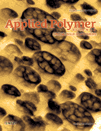Effects of high shear stress on the devulcanization of ground tire rubber in a twin-screw extruder
Abstract
The devulcanization reactions of ground tire rubber (GTR) and thermoplastic elastomer (TPE) mixtures performed during the melt-extrusion process through the induction of high shear stress by increases in the screw rotation speeds and reaction temperatures were investigated in this study. The results show that the high shear stress induced crosslink breakage and/or chain scission of GTR; this led to decreases in the gel contents and Mooney viscosities of the devulcanized GTR(DGTR)/TPE blend and decreases in the sizes of the unfused gel particles in the revulcanized blends of styrene–butadiene rubber [SBR/(DGTR/TPE)]. When the main composition of GTR was natural rubber, its allylic unit structures in the main chains were susceptible to degradation. Although the main composition of GTR was SBR, its main chains contained lower contents of double bonds and were more stable; this led to significant changes in the gel contents and Mooney viscosities of the devulcanized blend and in the mechanical properties of the revulcanized SBR/(DGTR/TPE) blend. The ethylene–propylene–diene monomer (EPDM4770) rubber had better compatibility with GTR than the ethylene/1-octene copolymer and also had a higher molecular weight than that of EPDM3745. This led to a lower gel content and a higher Mooney viscosity in the devulcanized blend and higher mechanical properties in the revulcanized SBR/(DGTR/EPDM4770) blend. The alkylphenol polysulfide 420 and 450 accelerated the devulcanization reaction and prevented the crosslinking reaction; this led to significant increases in the mechanical properties of the revulcanized SBR/(DGTR/TPE) blend. © 2012 Wiley Periodicals, Inc. J. Appl. Polym. Sci. 2013




